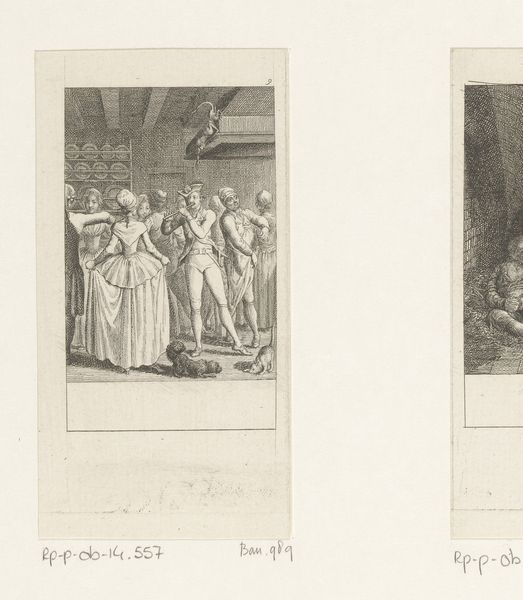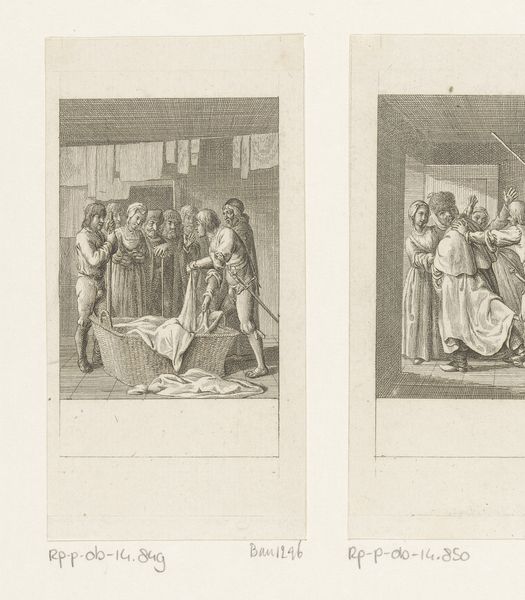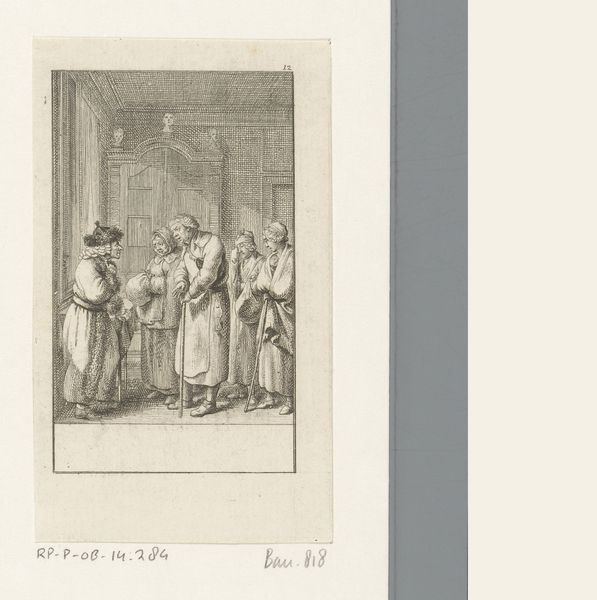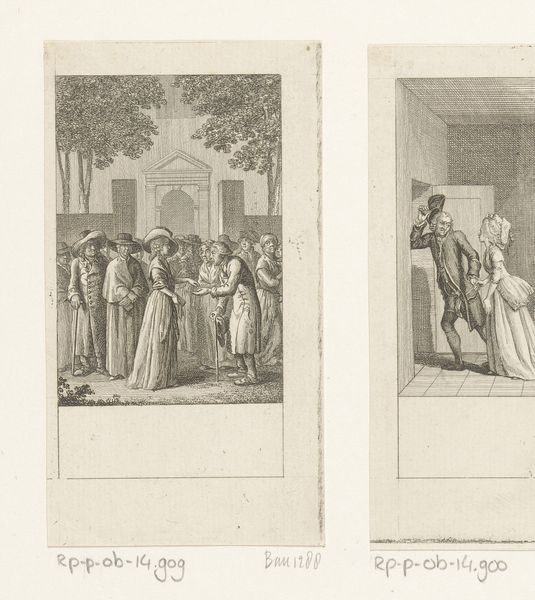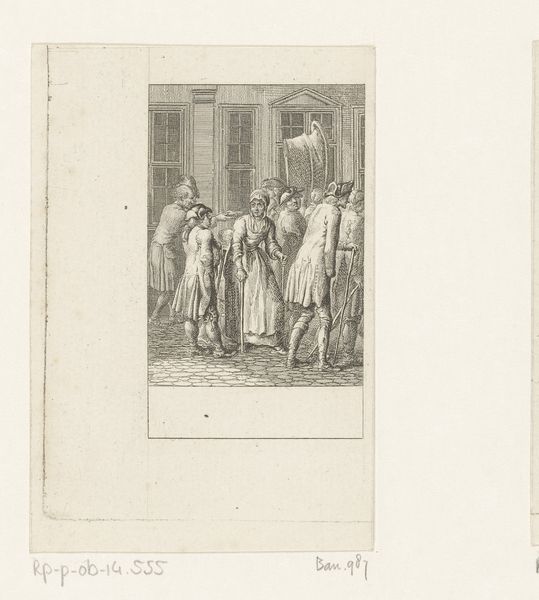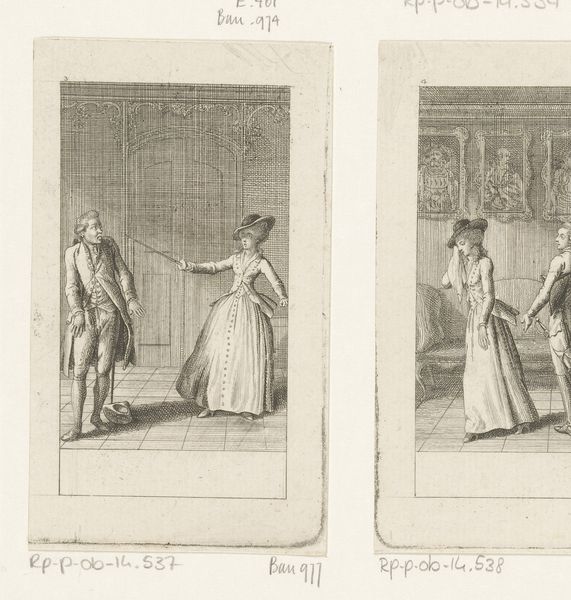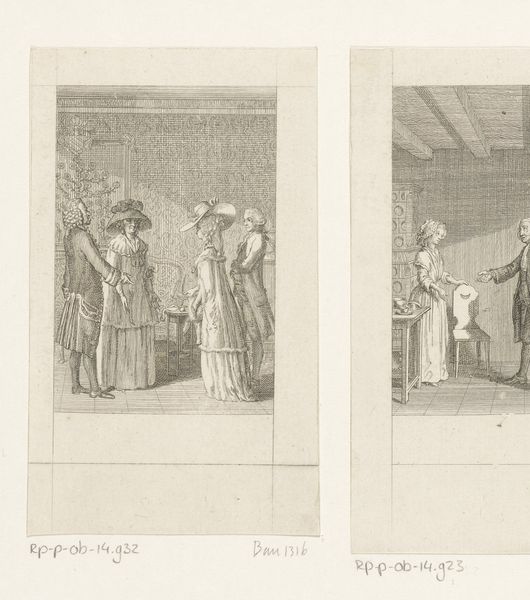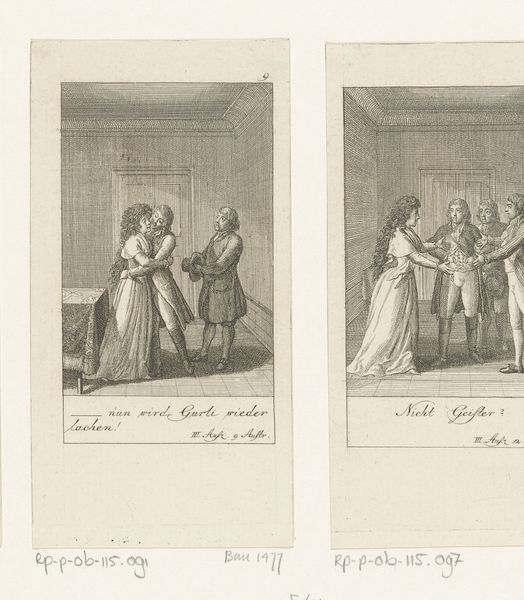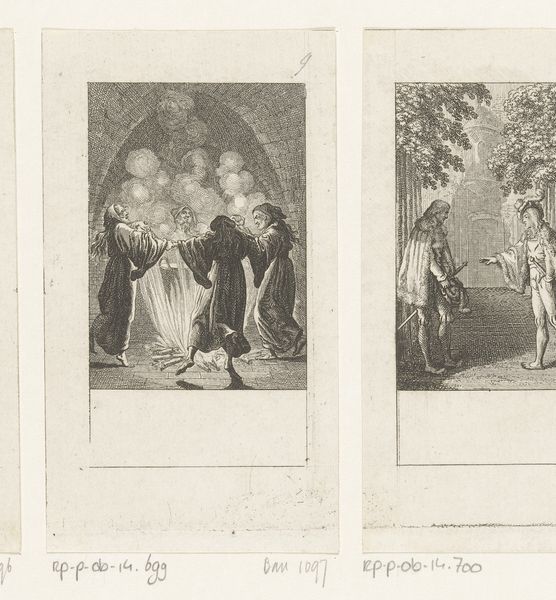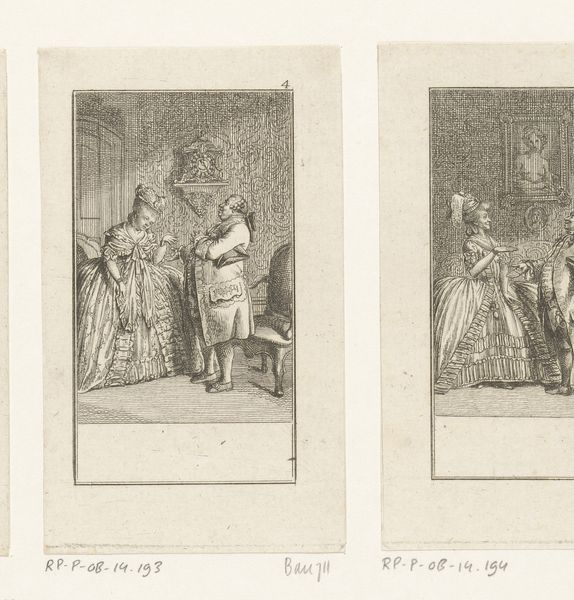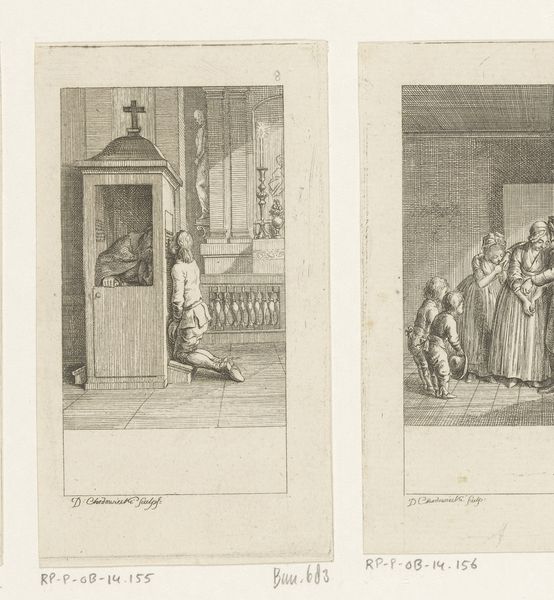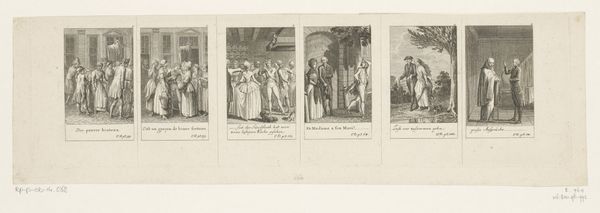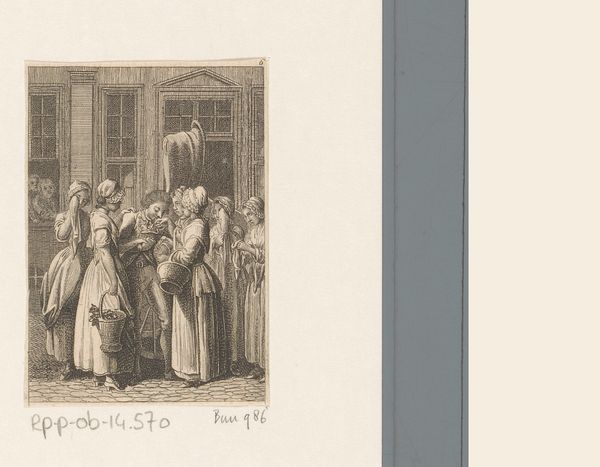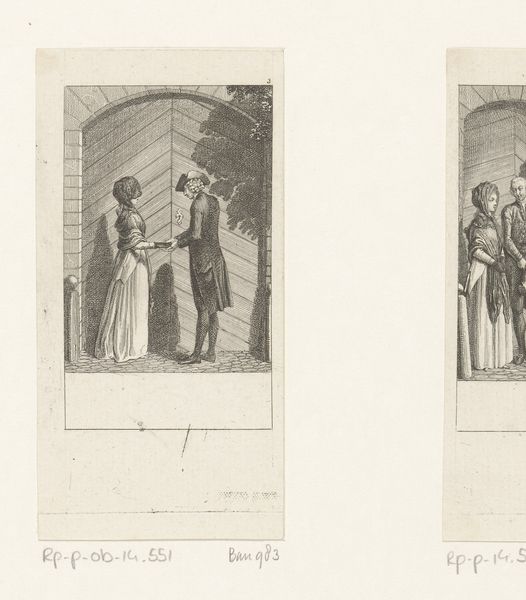
Dimensions: height 114 mm, width 58 mm
Copyright: Rijks Museum: Open Domain
Editor: So, this is "La Fleur kust de handen van de dames" or "La Fleur Kisses the Hands of the Ladies", an engraving made by Daniel Nikolaus Chodowiecki in 1783. It's quite a detailed scene! What strikes me is the circle of women, almost like they're adoring this central male figure. How do you interpret this work? Curator: What I see here is a staged tableau that reflects specific societal values. Think about the period: the late 18th century. We’re on the cusp of revolutions, witnessing the crumbling of old power structures. Chodowiecki, through his choice of genre painting and romanticism, is engaging in a dialogue about social interaction, and class distinctions. Notice how the women, while seemingly charmed, are also positioned in a way that accentuates the male figure's elevated social standing. Does it appear, perhaps, that their admiration might also reflect the financial transactions suggested in the piece? Editor: That's an interesting point! It didn’t immediately occur to me that there might be a financial implication, but now that you mention it, the gesture does seem performative, perhaps even transactional. Curator: Precisely! Think of how female virtue and social expectations intertwined at the time. The image becomes a commentary on gender dynamics and the performative aspects of courtly love and social climbing, particularly through the lens of nascent capitalism. In fact, given the era, do you consider this art either subversive, or supportive of societal conventions? Editor: I hadn't considered that Chodowiecki was making a pointed comment, I was stuck on the art style and period. Looking closer with your perspective, I'm prompted to investigate further! Thanks! Curator: Art is rarely passive, especially when it seems to simply reflect reality. Exploring art's underlying politics provides deeper historical meaning.
Comments
No comments
Be the first to comment and join the conversation on the ultimate creative platform.
